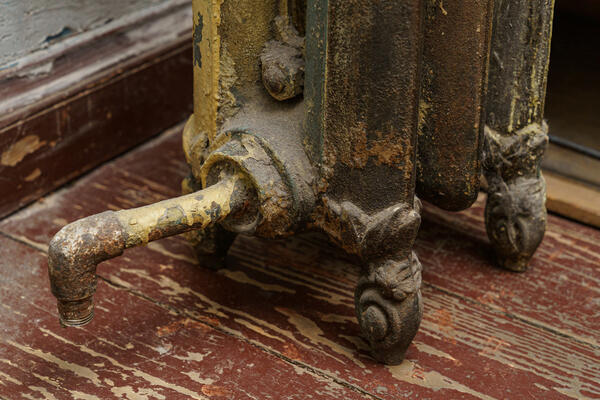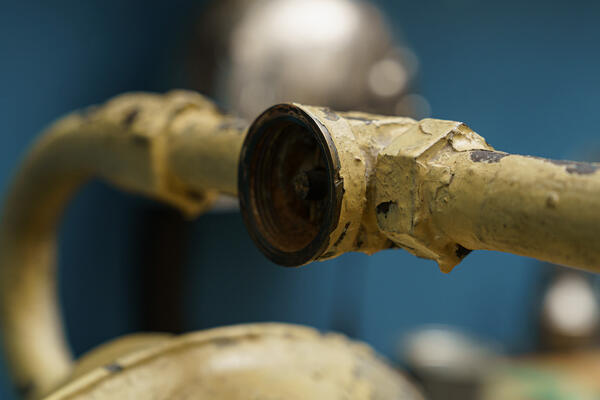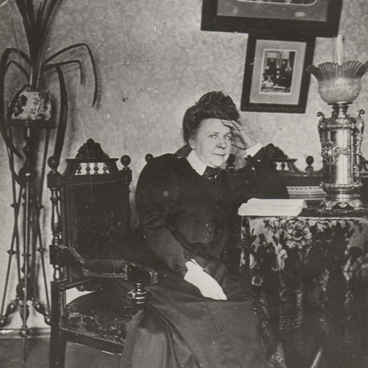The early-20th-century
steam radiator from 10 Bolshaya Sadovaya serves as a reminder of the prosperous
pre-revolutionary life of this building — when the plumbing was in good
condition, the separated apartments were heated, and the life of a respectable
apartment building was ordered and calm. Mikhail Afanasyevich Bulgakov
described these times in the feuilleton “No. 13. — The Elpit Workers’ Commune
Building”. The prototype of the Elpit building in Bulgakov’s story was building
No. 10 on Bolshaya Sadovaya, which the residents called Pigit’s house, after
its owner, the tobacco manufacturer Ilya Davidovich Pigit.
Steam radiator
Morning and evening, as if by magic, the gray harmonica of the steam heating <…> was filled with warmth. Bulbs were lit in the lamp socket on the stair landing… Deep inside the apartments there were white baths and a dull glance of telephone sets in the pompous semi-dark front rooms… Carpets… The offices were silent and solemn. Massive leather armchairs. And big massive people lived on all floors, all the way up.
After the Russian Revolution, the house was nationalized, the apartments were divided and turned into communal ones. From then on, unfortunately, apartment No. 50 was not always heated, and neither was the entire house. After nationalization and increasing the occupancy, there was a plethora of problems with heating. It was precisely because of this unfortunate issue and a carelessly operated potbelly stove that the house did burn down — the one from the pages of Mikhail Bulgakov’s “No. 13. — The Elpit Workers’ Commune Building”:
There were new residents in all 75 apartments. The pianos were silent, but the gramophones were alive and often sang in ominous voices. Ropes were stretched across the living rooms with damp linen hanging on them. The primuses hissed like snakes, and day and night the stinging smoke floated up the stairs. The bulbs had disappeared from all the sockets, and darkness fell every evening. Shadows with fardels stumbled in the dark and cried out wistfully:
— ‘Manya, hey, Maanya! Where are you? Damn it! ’
The parquet from two rooms in apartment 50 was used
up for heating.
Artifacts of the old life (radiators, moldings on the ceiling, preserved parquet in some places) were now side by side with primuses, irons, cans and bottles — the symbols of the new era. Mikhail Bulgakov, who lived in communal apartments for several years, involuntarily became a brilliant expert on the housing issue of the 1920s. The result of his wanderings through the capital’s communal apartments was a small collection of short stories “The Treatise on Housing”, published in 1926.





